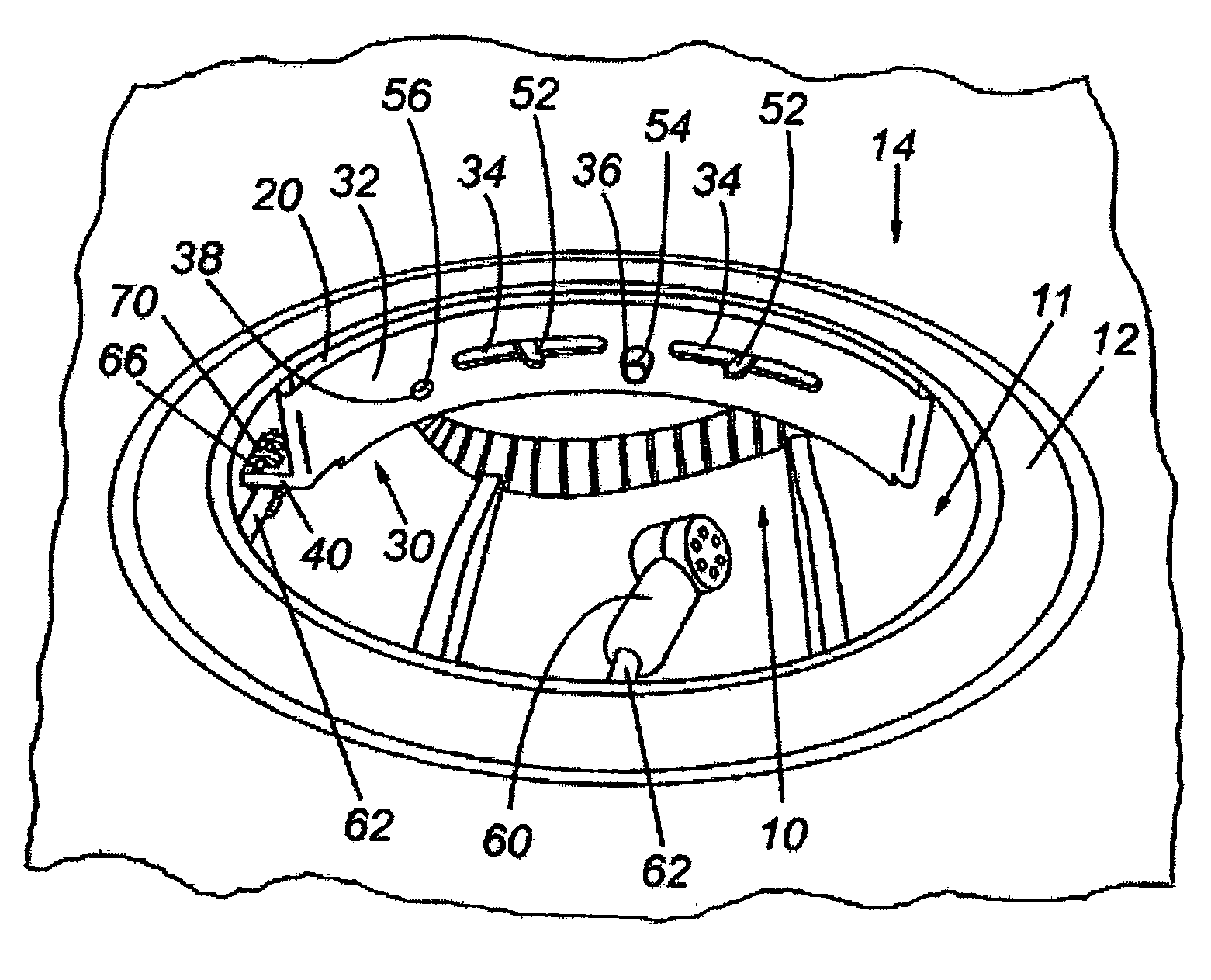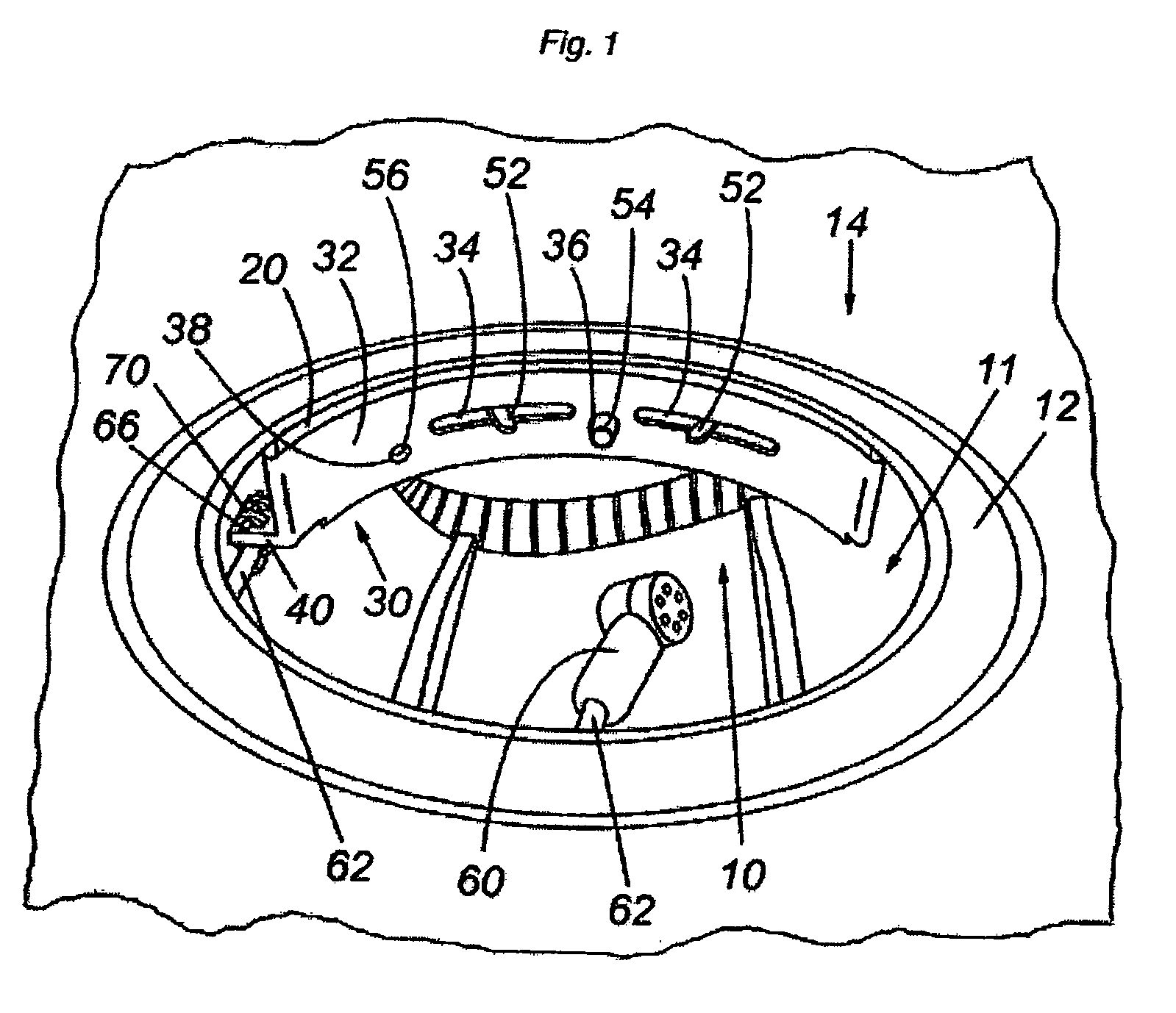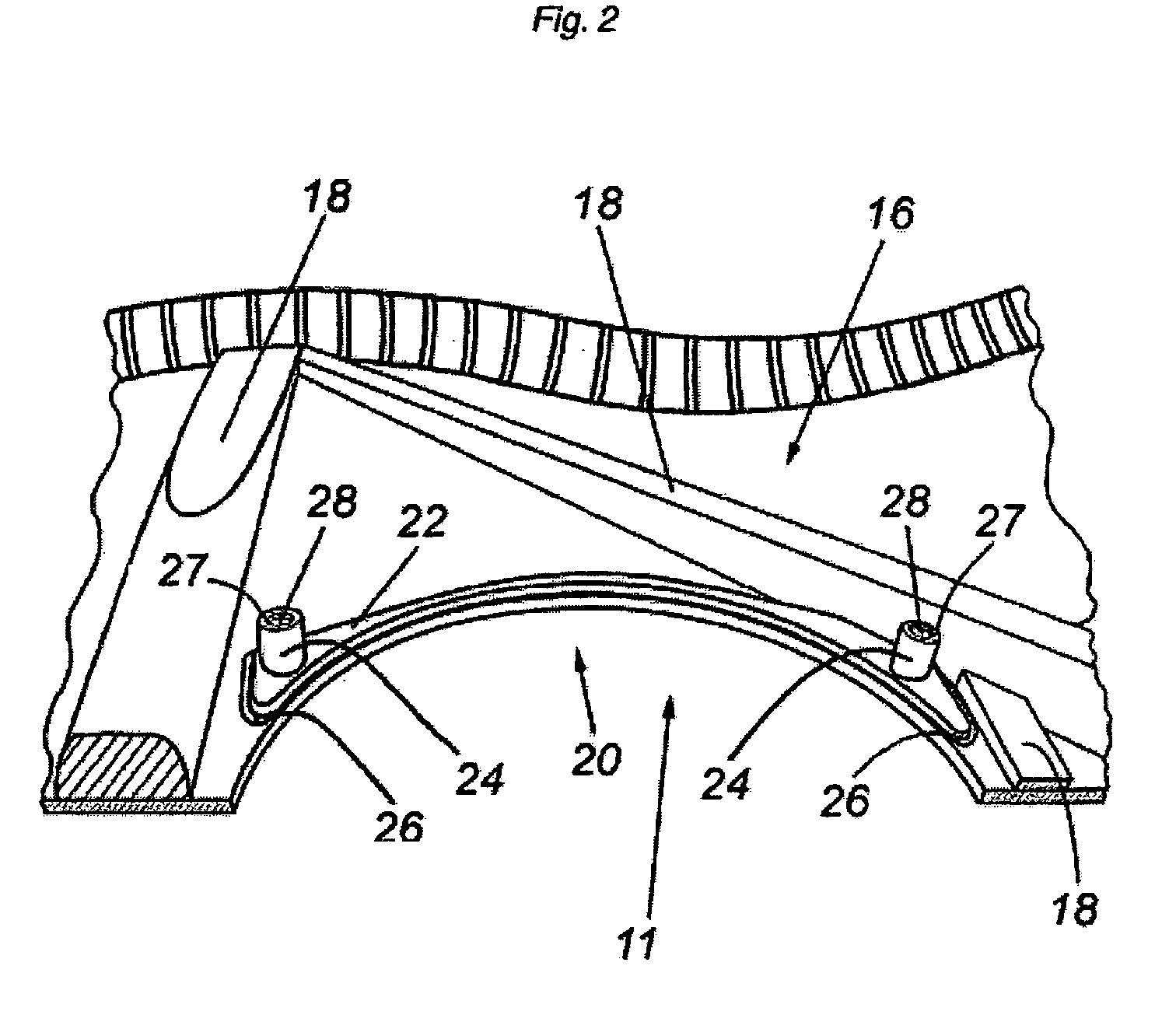[0005]The presently disclosed soundhole accessible musical
instrument control platform is designed to allow a combination of electronic elements including sound modifying controls, electronic circuitry and a variety of types of sensors to be mounted inside the body of a musical instrument in such a way as to produce no damage or irreversible physical alterations to the instrument, and to allow the user convenient and ergonomic access to the features of the control platform through the soundhole while using the musical instrument.
[0008]The first
advantage of this control platform is that the mounting bracket for the control platform is attached inside the instrument with adhesives, not with any irreversible modifications to the instrument. The majority of electronic control systems designed for use with musical instruments, particularly acoustic musical instruments, require at least one hole to be made in the body of the instrument by drilling,
cutting, routing or some other similarly destructive operation. These holes are an irreversible modification to the instrument, and incur the risk of immediate damage while being done, as well as causing a potential decrease in the
structural integrity of the instrument, and thus an
increased risk of damage to the instrument over its lifespan. Additionally, these modifications may lower the collectibility and the resale value of the instrument.
[0009]The second
advantage of this control platform is that the
mechanical design of the mounting
system provides
stress relief for the
adhesive bond between the mounting bracket and the instrument body and permits the circuit portion of the platform, which actually carries the combination of controls, circuitry, and sensors, to be easily and safely removed from the instrument for service, repair or upgrades, as well as to be reattached with precise positioning and no loss of
bond strength. This design for simple and controlled removal and reattachment of the circuit portion and associated elements also increases the durability and thus the reliability of the control platform. Additionally, in the preferred embodiment the mounting bracket and the circuit platform are mechanically connected in a manner designed to allow use of the controls with much less
perception of wobble than many other soundhole-accessible systems offer. For the few other electronic control systems designed to be mounted inside a musical instrument and to be soundhole accessible, the adhesives used by the majority of them are extremely sensitive to any mechanical stress, and bonding failures are common. Further, none of the other known soundhole-accessible control systems have any removal and reattachment methods more sophisticated than
adhesive-backed hook and loop fasteners such as VELCRO (Velcro Industries, B.V.), and those methods offer imprecise positioning, less reliable adhesion, and more of a
perception of wobble when any portion of the
control system is touched.
[0010]A third
advantage of this platform is a highly ergonomic design with controls that are easy to reach and use, as well as control detents and markings that are easy to feel and to read and which thus provide instant feedback for control position and the relative degree of effect. Additionally, the controls are surrounded by a cosmetic bezel that hides the actual mounting mechanism and circuitry from
sight, giving a more finished and aesthetically pleasing appearance to the platform, and not detracting from the appearance of the musical instrument.
[0011]A fourth advantage of this platform over previous soundhole accessible control and
preamplifier or “preamp” designs is the flexibility with which it can be used. Any combination of controls, circuitry, and sensors may be used with this platform, with options
ranging from a single control or a passive circuit or a single sensor, up to and including complex groups of controls, active analog and digital as well as passive analog circuitry, and multiple sensors including microphones processed and signal-blended onboard. All of these are options, with power either provided onboard through batteries or offboard through remote batteries connected through wires, a
power cable from an
AC adapter,
phantom power from external electronic devices connected to the output, or other power-providing means. If there is other electronic circuitry or separately configured sensing devices present in the instrument, it may be advantageous to electrically connect this platform to that circuitry and those sensing devices for a more flexible and comprehensive set of control options.
[0013]Yet another advantage of this platform is that an output connector may be integrated into the circuit platform such that an output signal cable may be attached through the soundhole, preventing the need for even as minor a permanent alteration to the musical instrument as drilling into the tailblock of the instrument and attaching an endpin jack. Likewise, input signal connectors may be present on the circuit platform, configured to accept pickups that are mounted either internally or externally to the body of the musical instrument, or to accept a combination of internal and external
pickup mounts.
 Login to View More
Login to View More  Login to View More
Login to View More 


